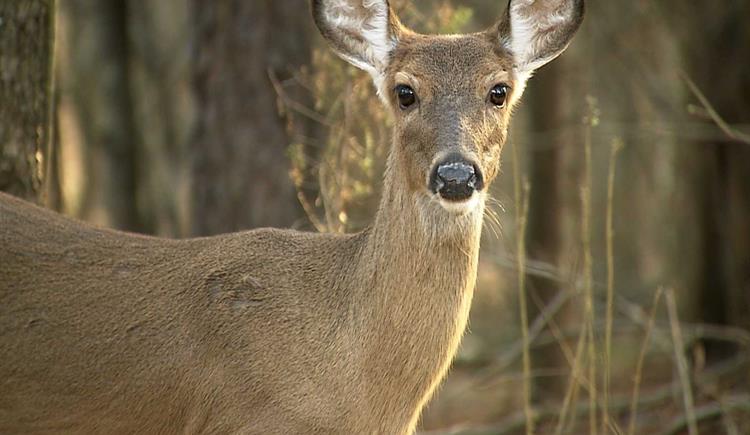 Deer are on the move throughout North Carolina between the months of October and December, and drivers should remain vigilant on the roads to remain safe.
Deer are on the move throughout North Carolina between the months of October and December, and drivers should remain vigilant on the roads to remain safe.
Fall is a beautiful time of the year in North Carolina but from October to December, drivers must remain vigilant on the roads to avoid deer-vehicle collisions. Deer movement increases dramatically during this time because of mating and hunting seasons, and limited lighting makes it more difficult for drivers to see them on or near roads.
According to the N.C. Department of Transportation’s Traffic Safety Unit, about 8 percent of all vehicle crashes in the state involve animal strikes – most of these involve deer.
Wake County had the highest number of animal crashes for a three-year period from 2022-2024 with 2,676. Wake County usually leads the state in the animal report due to its large geographic size and its fast residential growth.
County Rankings
From 2022-2024, the top 10 counties in the state had a combined 17,369 animal crashes over the last three years. Those crashes caused a nearly combined $58 million in damage, 686 injuries and three deaths. The top 10 counties in animal crashes and injuries for three years combined are as follows:
1. Wake
| 2,676
| 116
|
2. Guilford
| 2,080
| 136
|
3. Randolph
| 1,909
| 86
|
4. Pitt
| 1,835
| 66
|
5. Union
| 1,634
| 61
|
6. Columbus
| 1,543
| 50
|
7. Robeson
| 1,471
| 40
|
8. Duplin
| 1,434
| 45
|
9. Brunswick
| 1,422
| 39
|
Safety Advice
Below are important tips regarding animal (usually deer) crashes:
- Always maintain a safe amount of distance between your vehicle and others, especially at night. If the vehicle ahead of you hits a deer, you could also become involved in the crash.
- Slow down in areas posted with deer crossing signs and in heavily wooded areas, especially during the late afternoon and evening.
- Most deer-vehicle crashes occur where deer are more likely to travel, near bridges or overpasses, railroad tracks, streams and ditches.
- Drive with high beams on when possible and watch for deer eyes reflecting in the headlights.
- Deer often travel in small herds so if you see one deer near a road be alert for others.
- If you see deer near a road, slow down and blow your horn with one long blast
- Do not swerve to avoid a collision. This could cause you to lose control of your vehicle and cause a more serious crash.
- If your vehicle does strike a deer, do not touch the animal. A frightened and wounded deer can be dangerous or further injure itself. Get your vehicle off the road, if possible, and call 911.
Related